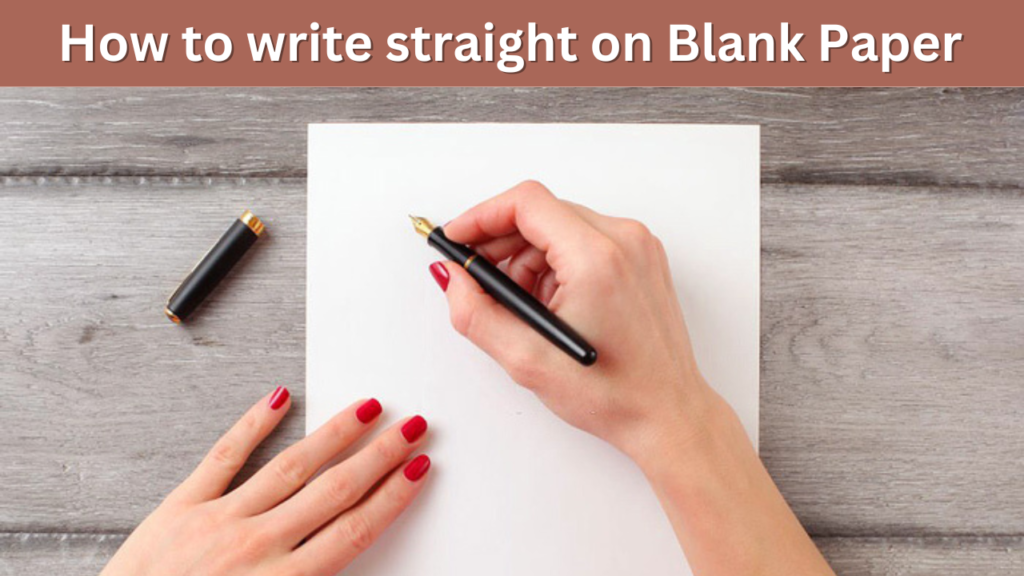Introduction:
Blank paper, even if it looks inviting, can be an intimidating canvas to write on. The desire to achieve neat straight lines can be a challenge, but fear not—some practical tips and techniques can turn your writing hobbies into a smooth, organized masterpiece. In this guide, we’ll delve right into the art of writing on blank paper. It offers insights, methods, and encouragement to help you up your writing game.
Preparation:
Before starting your writing journey, it’s important to set the stage for success. Choose a clean and tidy workspace where you can concentrate without distractions. Choose the right paper and writing instruments that match your preferences and ensure a smooth writing experience.
The Role of Guidelines:
Guidelines are the star of your writing journey. Lined paper works as a ready reference, but if you’re working on plain paper, feel free to create guidelines. Draw light lines to guide the height and width of the letters, creating a framework for continuity.
Techniques for Consistent Letter Size:
Consistency is key when straight writing is the goal. Practice exercises that improve your control over your writing instrument. Pay attention to your grip and make sure it stays consistent throughout. Focus on keeping the font consistent in terms of height and width.
Body Posture and Hand Positioning:
Writing ergonomics plays a crucial role in achieving straight lines. Sit comfortably in a good position that allows for optimal arm position. A relaxed and steady hand improves control, resulting in more accurate writing.
Visualization Techniques:
Use the power of your mind and eyes. Visualize horizontal lines on paper and create a mental guide for writing. This technique helps maintain alignment and spacing, which promotes spatial awareness, which promotes straight and neat writing.
Taking it Slow: The Art of Precision:
Speed is not your ally when it comes to direct writing. Learn to write slowly and deliberately. Make every stroke deliberate and prioritize accuracy over speed. Patience is your companion on this journey.
Incorporating Technology:
Explore technical aids that can complement your efforts. Writing apps with built-in prompts or digital tools designed to practice and improve writing can provide valuable support. Consider combining traditional and technical approaches for best results.
Troubleshooting Common Challenges:
Solves common problems like crooked and uneven spacing. Analise mistakes as opportunities for improvement. Persistence is key; acknowledge failures, learn from them, and move forward with renewed determination.
Celebrating Progress:
Recognize and celebrate small victories. Set realistic goals and track your progress. Cultivate a positive mindset and recognize that mastery takes time, practice, and dedication.
Conclusion:
Mastering the art of writing directly on blank paper is a journey to self-discovery and honing your skills. Armed with the right tools, techniques, and mindset, you can transform a blank page into a canvas of organized and eloquent expression. Embrace the process, be patient with yourself, and enjoy the satisfaction of watching your writing become a work of art. Happy writing!
Share this content:
